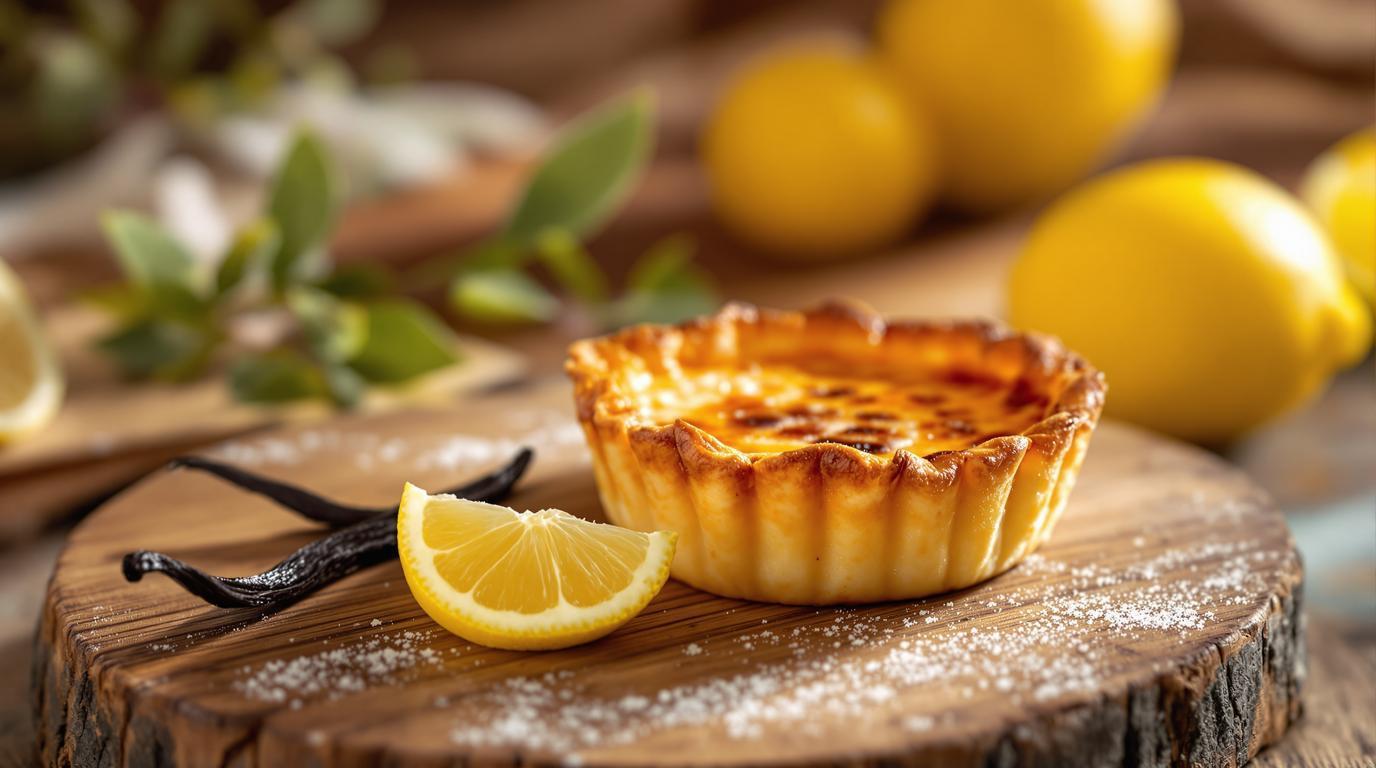I discovered Pastel de Nata during my time in Portugal, but it wasn’t until I visited Melbourne that I encountered this brilliant Australian twist. What makes this version special is the emphasis on luxurious vanilla custard – silky, aromatic, and with just the right amount of caramelization. The contrast between the shattering crisp pastry and that creamy center creates a sensory experience that’s nothing short of magical. While traditional versions subtly hint at cinnamon and citrus, this Aussie adaptation boldly celebrates vanilla in all its glory.
The Story
Pastel de Nata originated in 18th-century Portugal, where monks used leftover egg yolks to create these heavenly tarts. The Australian version respects this heritage while highlighting ingredients the continent excels at – particularly vanilla. Working in Sydney years ago, I watched a Portuguese-Australian pastry chef meticulously develop this variation, testing different vanilla beans until achieving the perfect balance. The result honors tradition while creating something distinctly Australian – much like the country’s approach to culinary innovation.
Ingredients Spotlight
The star of this show is undoubtedly high-quality vanilla. If possible, source Tasmanian or Queensland vanilla beans for that distinctive floral complexity you won’t find in extract alone. The puff pastry should be all-butter for proper lamination – this is non-negotiable if you want those characteristic flaky layers. For the custard, seek out full-fat Australian dairy for its exceptional richness. The complete ingredient list includes:
- 1 sheet (1 lb/450g) high-quality puff pastry
- 1 cup (200g) granulated sugar
- 1 cup (240ml) whole milk
- ¼ cup (30g) cornstarch or flour
- 6 large egg yolks
- ½ tsp salt
- 1 vanilla bean or 1 tsp pure vanilla extract
- 1 cinnamon stick (optional)
- Peel of 1 lemon (optional)
Step-by-Step Guide
The technique here requires precision but isn’t as intimidating as it may seem. Follow these steps for perfect results:
- Preheat your oven to its maximum temperature (ideally 550°F/290°C) with a baking stone or steel if you have one.
- Make the sugar syrup by combining sugar, ½ cup water, vanilla bean (split and scraped), cinnamon stick, and citrus peel. Heat until it reaches 220°F (100°C) without stirring.
- In another saucepan, whisk milk, cornstarch, and salt. Heat gently, whisking continuously until thickened (about 5 minutes). Cool for 10 minutes.
- Slowly whisk the hot syrup into the milk mixture, then whisk in the egg yolks until smooth. Strain through a fine sieve.
- Cut the puff pastry sheet in half, stack the halves, and roll into a tight log. Slice into 12 equal discs.
- Press each disc into a muffin tin cavity using cold, wet fingers, extending the dough slightly up the sides.
- Fill each pastry cup about ¾ full with the vanilla custard and bake for 10-12 minutes until the tops are caramelized with dark spots.
Expert Techniques
The difference between good and extraordinary Pastel de Nata comes down to technique. Keep your pastry cold at all times – I actually chill my hands in ice water before handling it. When filling the tins, press from the center outward, creating a thinner center and slightly thicker edges. This structural detail prevents the bottoms from becoming soggy while ensuring the edges rise beautifully.
Chef’s Note: The temperature shock between cold pastry and extremely hot oven creates that signature contrast between crisp exterior and creamy center. If your oven doesn’t reach 550°F, place a heavy baking sheet in the oven while preheating to retain more heat.
For the custard, the cornstarch acts as insurance against curdling, but don’t overdo it – too much will make your filling gummy rather than silky. The strain step is non-negotiable; it’s what gives you that perfectly smooth texture.
Presentation & Pairing Ideas
Serve these tarts slightly warm or at room temperature when the contrast between crisp pastry and creamy filling is at its peak. For a truly Australian experience, pair with a glass of Rutherglen Muscat or a flat white coffee. For a delightful twist, try serving with a small scoop of salted caramel ice cream or a spoonful of macadamia praline.
For dietary variations, you can substitute the dairy milk with a rich oat milk (though the texture will be slightly different) or explore adding native Australian herbs like lemon myrtle to the custard for an even more distinct local twist.
The beautiful thing about these tarts is that they’re approachable enough for home bakers but special enough for celebrations. Much like the techniques in classic French dishes, mastering the fundamentals here opens doors to endless variations. Don’t be afraid to experiment with your own flavor profiles once you’ve mastered the base recipe – that’s how delicious culinary traditions evolve. 🍮✨
